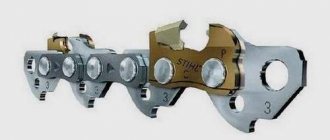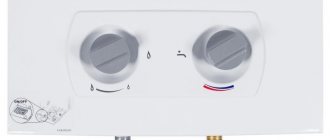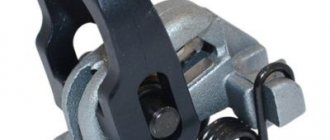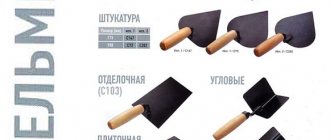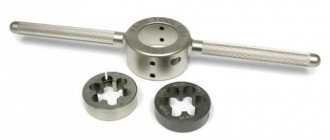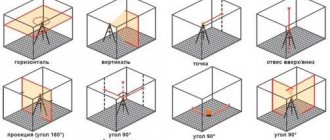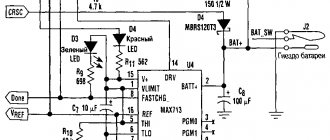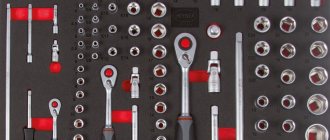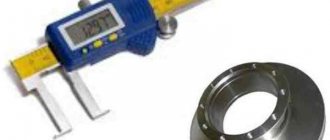A jigsaw is designed for high-quality sawing of various materials, but during its operation you may encounter such a defect as an uneven cut. To avoid this problem, you need to know how to use the tool correctly and what actions to take if it malfunctions.
Almost any jigsaw breakdown can be fixed by yourself
Why can a jigsaw cut crookedly?
Even an experienced worker encounters curved sawing with a jigsaw. This problem is usually attributed to a hardware malfunction. However, most often the reasons are as follows:
- Lack of experience with the tool.
- The blade that needs to be sawed has a defect. You can attach a base of any length to a jigsaw, but if such a problem rarely arises with short-length material, then the curvature of long sticks is present in almost every case.
- Roller failure. There are 2 types: the first is wear of the mounting holes that fix the roller, and the second is abrasion of the inside of the roller.
- A broken rod prevents the tool from working properly.
To identify the reason why the jigsaw is moving to the side, you need to analyze the sequence of actions taken and begin to correct them. Particular importance should also be paid to the speed of movement of the tool.
Important! There is no need to press hard on the device to speed up the sawing process, since the blade will not be able to cut the material at the required speed, and the file itself will go to the side.
To determine and eliminate the cause of a crooked cut, you need to do the following manipulations:
- do not put pressure on the instrument;
- correctly set the speed of movement using the regulator, taking into account the thickness and characteristics of the materials being cut;
- secure the workpiece well;
- Be sure to press the jigsaw firmly against the surface with the sole.
To ensure an even cut, you need to create a support
Jigsaw Fiolent: main reasons for failure
Replacing the rod
In the first case, to avoid this damage, it is enough to handle the tool carefully and carefully. But if this happens, you will have to replace the damaged rod. To do this you need:
- Remove the housing cover by unscrewing the 4 screws.
- Remove the rectangular washers and retaining guides from the rod.
- Unscrew the 4 bolts and remove the mechanism cover. Below it is the flywheel and the rod itself.
- Unscrew 2 screws each, remove the lower and upper rod holders. The latter has a spring, so you need to remove it carefully.
- Remove the damaged rod with guide washers.
- Lubricate the flywheel and eccentric with special gearbox lubricant.
- Place the guide washers on the new rod and install it in place.
- Attach the saw blade holder to the lower part of the rod.
- Install the upper and lower holders, screw on the mechanism cover and install washers and retaining guides.
- Insert the cutting tool and test the jigsaw at idle and under load. If the check does not reveal any deviations, install the housing cover.
Tool lubrication
In the second case, everything is much more serious. It would seem that what is so difficult about lubrication? But due to the fact that the tool constantly operates in extreme conditions, wood dust cannot be avoided getting inside the device; service work has to be carried out according to the intensity of use, but at least once a year.
All mating parts and assemblies need to be lubricated. To do this, you need to disassemble the jigsaw. But if in the first case you, for example, limited yourself to only dismantling the rod, now we disassemble the tool completely and smear all the rubbing surfaces of the parts.
For lubrication, the manufacturer offers Litol 24, but it will not work in a jigsaw gearbox due to its thick consistency, so it is usually lubricated with oils. You can combine Litol 24 with graphite-containing lubricant Feol 2U in a ratio of 3:1.
How wear and quality assembly affect the curvature of the cut
Not all workers know what to do if a jigsaw cuts crookedly, or how to correct such a defect. So, if you purchased a cheap tool, then you should thank the manufacturer for the malfunction.
However, sometimes the fault lies on the shoulders of the employee, since modern manufacturers recommend using inexpensive devices for a maximum of 20-30 minutes per approach. Therefore, if a failure occurs, the fault is most likely in the actions of the owner himself.
The situation is completely different when a defect occurs in professional electrical appliances. In this case, you shouldn’t rush and run to the workshop with the tool; it’s better to figure out why the jigsaw cuts crookedly and carry out the repairs yourself.
Instructions:
- Find out if there is any play in the rod. When its value is more than 0.9 mm, this means that the breakdown lies precisely in its design. Even the best quality guides wear out over time, so it is necessary to monitor their condition.
- The canvas is not tightly fixed. This malfunction is often associated with wear of the fastening mechanism.
- The guide roller is faulty - it does not hold the material and vibrates, as a result of which the jigsaw does not cut smoothly.
- The canvas is deformed. If the shape of the file is curved, then it will no longer be able to cut smoothly.
Important! The reason for a crooked cut may also be due to the dullness of the cutting teeth of the blade, so you need to make sure that they are not worn out, since continuing to work in this case is dangerous to your health.
Often the problem of a crooked cut lies in the curvilinearity of the blade
Basic tool malfunctions
How to determine whether a jigsaw needs repair or preventive measures? There are a number of signs that you need to pay attention to:
- the case began to heat up too much during operation;
- when turning on and further operation, uncharacteristic sounds are heard;
- commutator brushes spark;
- the engine cannot be adjusted, other problems are observed.
Replacing jigsaw rod guide bushings.
When the listed signs are detected, you must immediately turn off the jigsaw, then inspect it to determine the malfunction. All types of such breakdowns can be divided into 2 large groups.
Electrical failures:
- Factory defect in the form of rotor breakdown (cannot be repaired, you must contact a service center).
- The stator or rotor becomes very hot during operation, and melting of the insulation is observed. The reason is dust, contamination, improper load.
- The brushes wear out (replacement is being carried out).
- If the speed controller does not work, it needs to be replaced. It is best to contact a specialist.
Failures of the mechanical part of the jigsaw:
The internal structure of a jigsaw.
- The gear has worn or deformed teeth. It is possible to repair a jigsaw; a complete replacement of the gear is required; in the future, it is necessary to carefully monitor the loads and the correct choice of blade.
- The rod breaks and there are kinks on it. It is necessary to repair the jigsaw by replacing the rod, and then choose the right files according to the type of material. For example, for wood or metal, use only specially designed devices.
- The balancers that guide the rollers are worn out. The balancers need to be replaced, and the loads need to be monitored in the future.
- If the bearings are worn out, they are replaced. It is best to contact a specialist.
Other types of breakdowns may also occur. For example, if there is a strong impact, the case may crack. Do not drop the jigsaw; in this case, other parts may be damaged. It is best not to fix engine breakdowns yourself, but to immediately contact a service center. You can handle replacing worn parts yourself. To do this, the manufacturer provides instructions; following them, you can easily cope with the work yourself.
Breakage of the support roller and fixation unit: prevention, repair
Main characteristics of household jigsaws.
How to repair if problems are found? The support roller may break if the load on it is too great, i.e. cutting technology is broken. The file is attached specifically to this roller; if it is broken, the file will not be able to be used. To prevent damage from happening:
- Use only high-quality hacksaw blades.
- Do not use dull files.
- Hacksaw blades should be selected only in full accordance with their intended purpose. For example, for metal, only the blade that is intended specifically for this material is used.
If the roller is not replaced when it breaks, the equipment may jam during operation. The repair will begin not with replacing the roller, but with cutting it with another tool and then replacing it. The repair itself is not too complicated. The support roller with signs of damage must be removed and then replaced with a new one that matches the jigsaw model used.
The working blade fixing unit usually breaks when it gets covered in large quantities of dust. During operation, dust is not uncommon, so for prevention it is regularly necessary to clean the surface of the fastener. Over time, the situation will get worse and the equipment may completely fail. The repair usually consists of completely replacing the retainer.
It consists of performing a number of actions:
- The unit must be constantly cleaned and then lubricated.
- During operation, you should use a dust collector, which will prevent large amounts of dust from getting onto the tool.
Checking the installation of the sole relative to the file
Already when purchasing a device, for example, the Interskol brand, you may encounter incorrect installation of the vertical angle. To correct such an error, you need to loosen the fasteners yourself, move the sole, install it and then firmly fix it.
The flatness of the sole must also be checked. If this condition is not met, you need to remove it from the tool and straighten it using a bronze hammer on an anvil. The final step will be sanding the surface with sandpaper.
Each time it is necessary to check the device for malfunctions.
How to quickly learn to cut smoothly with a jigsaw
The process of sawing materials consists of many important stages, so:
- The blade of the required length, thickness and width is selected. Then its relationship with the workpiece material is checked.
- Preparing the work progress. It is important to determine the need for a pendulum stroke.
- Installation of additional equipment when necessary.
- Preparation of the workplace. You will definitely need a strong and most importantly stable stand, preferably with a flat surface.
- The cutting line is determined. For convenience, it is best to use a black marker, of course, if you can leave marks on the material. Otherwise, you should use a simple pencil, traces of which can be easily removed with an eraser.
- The workpiece is fixed on a stand. If the part does not completely fit on the surface, you need to install a support under it, otherwise the jigsaw will lead.
Wood is the most popular material for cutting.
Since the cutting process varies depending on the type of surface, it is important to understand how to properly cut different materials:
Tree
When cutting this material, special attention is paid to the choice of file. You need to choose standard nozzles, with an average tooth size and a pitch interval of 0.25 to 0.4 cm.
The cleanliness of the move must be set to the maximum level. As for the work itself, you should start sawing carefully, controlling the progress of its actions without haste, without pushing the device.
Attention! To increase cutting speed, use a function called “pendulum stroke”.
Metal
To cut metal, you need to choose files with small teeth, the pitch of which is in the range from 0.1 to 0.15 cm. A prerequisite is to turn off the “pendulum” and set the stroke rate to the lowest level.
During operation, you cannot press the device; it needs to smoothly saw through the metal.
Important! To prevent the metal from heating up, it is necessary to take short breaks so that it has time to cool.
Plastic
For plastic, you need to choose a file with small teeth to improve the quality of work. The jigsaw should be adjusted based on the type of plastic being cut. In order for the cut to be smooth, the device must be set to the minimum value with the pendulum stroke obligatory turned off.
Rules for smooth sawing with a jigsaw
- For a perfectly smooth saw, it is necessary to use a device with an increased frequency of blade movement. It is better to choose a large file. A board will serve as a guide. Pre-prepare 2 clamps with a workpiece and a guide. To ensure that the jigsaw is positioned freely, it is placed on a raised platform. Using a tape measure, measure the width of the material, draw marks, and make one line out of them using a ruler.
- The guide is placed a few centimeters from the cut. It is attached with clamps. The jigsaw is placed with the cutting part against the cutting line. Connect it to the guide and attach it with a clamp. You need to make sure that she doesn't move.
- The same manipulations are performed on the other side. To ensure that there are no defects left on the wood, you need to clamp lightly.
- The next stage is moving to the first clamp, checking its stability and clamping. After this, turn on the jigsaw, setting the highest speed. The number 2 is set on the pendulum. The file is installed along the cutting line. The guide is pressed against the side of the platform and sawing begins.
- By controlling the position of the platform, the tool is moved forward. When there is just a little left to the end, you need to support what you sawed off so that it does not break off. The cut pieces will be perfectly straight.
- To make the saw glide smoothly and easily, some people use a removable blade. It comes from different materials. It is fixed on the support sole of the saw. The guide bar and adapter ensure an even cut.
- Some materials require additional cooling. When working with them, you need to keep a bowl of cool water near you. It can be installed on a support sole.
A jigsaw is a universal tool that is indispensable in the household. Knowledgeable people say: skill in handling it comes with experience. The more you train, the better the result will be.
DIY jigsaw guide
If a jigsaw cuts at an angle, how to correct the situation? It should be understood that a high-quality tool can efficiently cut any material. If the tool cuts crookedly, then you should make a guide for it yourself.
The principle is as follows:
- Take a straight batten made of fiberboard or chipboard with a thickness of at least 5 mm, a level or a steel profile.
- To secure the rail you will need clamps or screws.
- That's all, the guide is ready, all that remains is to adjust and test it in practice.
Important! To start using a homemade workpiece, you need to draw a cutting line and make markings parallel to it at an equal distance from the original one.
You can make a high-quality tool guide yourself
Recommendations and rules for cutting smoothly with a jigsaw
To learn how to cut smoothly with a jigsaw, you should follow a number of recommendations:
- Select blades for the material, taking into account their thickness.
- Before starting work, the workpiece must be firmly secured.
- Mark using a marker or pencil.
- Each time the tool must be checked and all faults eliminated.
- Be sure to use guides.
- Use a vacuum cleaner that will clean the surface and leave the marking line visible.
- 7. Do not push the tool.
To improve the quality of sawing, you should make markings.
Almost any defect in the operation of a jigsaw can be corrected; you just need to correctly identify the cause and make every effort to eliminate it.
